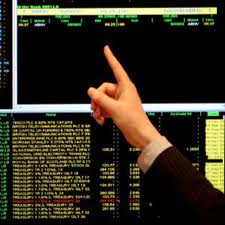Swing trading is commonly defined as a speculative activity in financial markets whereby instruments such as stocks, indexes, bonds, currencies, or commodities are repeatedly bought or sold at or near the end of up or down price swings caused by price volatility. A swing trading position is typically held longer than a day, but shorter than trend following trades or buy and hold investment strategies that can be held for months or years. Profits can be sought by engaging in either Long or Short trading.
Swing trading methods
Utilizing a set of objective rules for buying and selling is a very common method used by swing traders because the rules eliminate the subjectivity, emotional aspects, and labor-intensive analysis of swing trading. The trading rules can be used to create a predictive market trading algorithm or “trading system” which can be further defined as a calculable set of trading rules that uses either technical analysis and/or fundamental analysis and results in entry, exit, and stop loss trade price points. Trading algorithms are not exclusive to swing trading and are also used for day trading and long-term trading. Investment in researching trading algorithms/systems has skyrocketed, particularly by investment banking firms like Goldman Sachs, which spends tens of millions on trading algorithm research and staffs its trading algorithm team more heavily than its trading desk. Simpler rule-based approaches include Alexander Elder’s strategy, which measures the behavior of an instrument’s price trend using three different moving averages of closing prices. The instrument is only traded Long when the three averages are aligned in an upward direction, and only traded Short when the three averages are moving downward. Trading algorithms/systems may lose their profit potential when they obtain enough of a mass following to curtail their effectiveness: “Now it’s an arms race. Everyone is building more sophisticated algorithms, and the more competition exists, the smaller the profits,” observes Andrew Lo, the Director of the Laboratory For Financial Engineering, for the Massachusetts Institute of Technology. Identifying when to buy and when to sell is the primary challenge for all swing trading as well as long-term trend following trading strategies. However, swing traders do not need perfect timing—to buy at the very bottom and sell at the very top of price oscillations—to make a profit. Small consistent earnings that involve strict money management rules can compound returns significantly. It is generally accepted and understood that all mathematical models or algorithms will not always work with every instrument or in every market situation.
Channels
Suppose a trader observes that a certain stock trades down to $20 (a “support” level), up to $30 (a “resistance” level), down to $20, up to $30, and so on. He may reason that this pattern will continue. Then the strategy is: buy when the stock is near $20; sell and short when the stock is near $30. Assuming that the pattern continues, he would continue to make a profit. If, however, the stock goes to significantly outside the range, it is said to “break out.” In this case the trader should abandon his position.
Risks involved
Risks in swing trading are commensurate with market speculation in general. Risk of loss in swing trading typically increases in a trading range, or sideways price movement, as compared to a bull market or bear market that is clearly moving in a specific direction.





